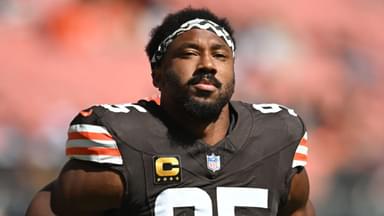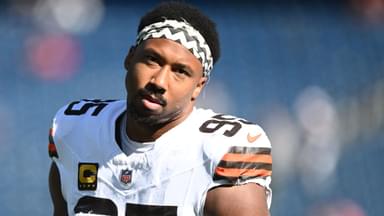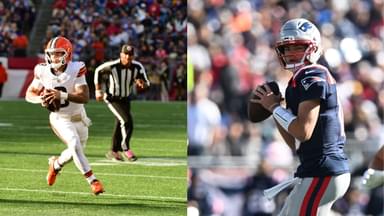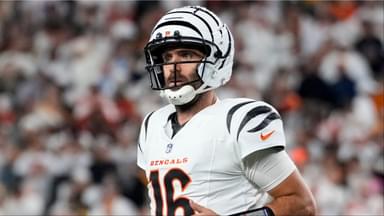Things were never going to be easy for Shedeur Sanders when he entered the Cleveland Browns camp as a 5th-round pick. From day one, he faced an uphill battle in a crowded QB room, sitting behind three others on the depth chart. Training camp didn’t do him many favors either.
Advertisement
Cleveland limited the Colorado alum to mostly 2nd- and 3rd-team reps, with only the occasional look with the starters. Still, Sanders kept grinding, earning a slice of the preseason action.
He made a solid impression in his first preseason outing but struggled to replicate that in the finale. When the Browns finalized their 53-man roster, Sanders survived, but not in the role he hoped for.
Sanders is slotted in as QB3, behind veteran Joe Flacco and fellow rookie Dillon Gabriel, who claimed the backup job and a clearer path to the starting spot should Flacco falter. The Browns, meanwhile, shipped Kenny Pickett to the Raiders and moved on from Tyler Huntley. Not everyone accepted how things played out. Not former MVP Cam Newton.
The Panthers legend voiced his frustration, saying the Browns’ coaching staff, led by HC Kevin Stefanski, has an agenda against Shedeur. In Cam’s view, Sanders hasn’t been given the same opportunities as Gabriel and Flacco, and the team is deliberately putting him in situations where he’s more likely to fail.
That sentiment boiled over after the third preseason game. Sanders struggled in limited snaps, taking multiple sacks and losing yardage. Gabriel put up cleaner numbers and avoided sacks altogether. On the surface, it looked like Gabriel outperformed him. But dig deeper, and there’s context most are overlooking.
The Browns cut four of the five offensive linemen who were protecting Sanders in that game. They stuck him behind a patchwork unit, while Gabriel benefited from first-team protection. The comparison wasn’t apples-to-apples, and Newton explained this. “It’s getting to a point where it’s becoming abundantly clear that there is a motive in Cleveland,” he said.
“Now, when I look at the stat line, some people would look at yards, some would look at TDs. What I’m seeing is the efficiency, but more or less, the sack yards. 5-41, Joe Flacco was one sack for nine yards, [and] Gabriel was 0-0. There are a lot of determining factors there, and what we all want to see is equal rights. We all want to see equality amongst the locker room in Cleveland,” added Newton.
That said, not all of Sanders’ struggles can be pinned on Cleveland. He has carried over one bad habit from college: Shaky pocket movement. Newton pointed out that Sanders doesn’t step up into the pocket often enough, which shrinks his throwing window and leaves him exposed to sacks.
The flaw was evident on his college tape. But in all fairness, Sanders rarely had the chance to play behind a sturdy offensive line that would let him develop those instincts.
It feels like the Browns drafted Shedeur Sanders, kept him on the roster, but never really trusted him or wanted him to succeed. Compared to Gabriel, they clearly don’t see a long-term future in him.
That explains why Sanders never received meaningful first-team reps or the protection of the starting offensive line in preseason games, robbing him of a fair chance to showcase his talent. The situation became even more telling when Kevin Stefanski pulled him out mid-game in favor of Tyler Huntley, who was released immediately afterward.
Moves like that suggest Sanders was never truly in the team’s plans. And, he deserves better.
Still, like many young quarterbacks before him, Sanders will have to bide his time, pay his dues, and fight his way up the ladder. That’s something he never had to do at Colorado or Jackson State, where he thrived under the protection and support of his father.








